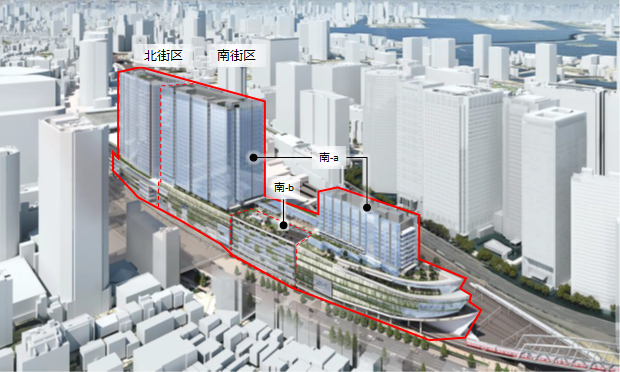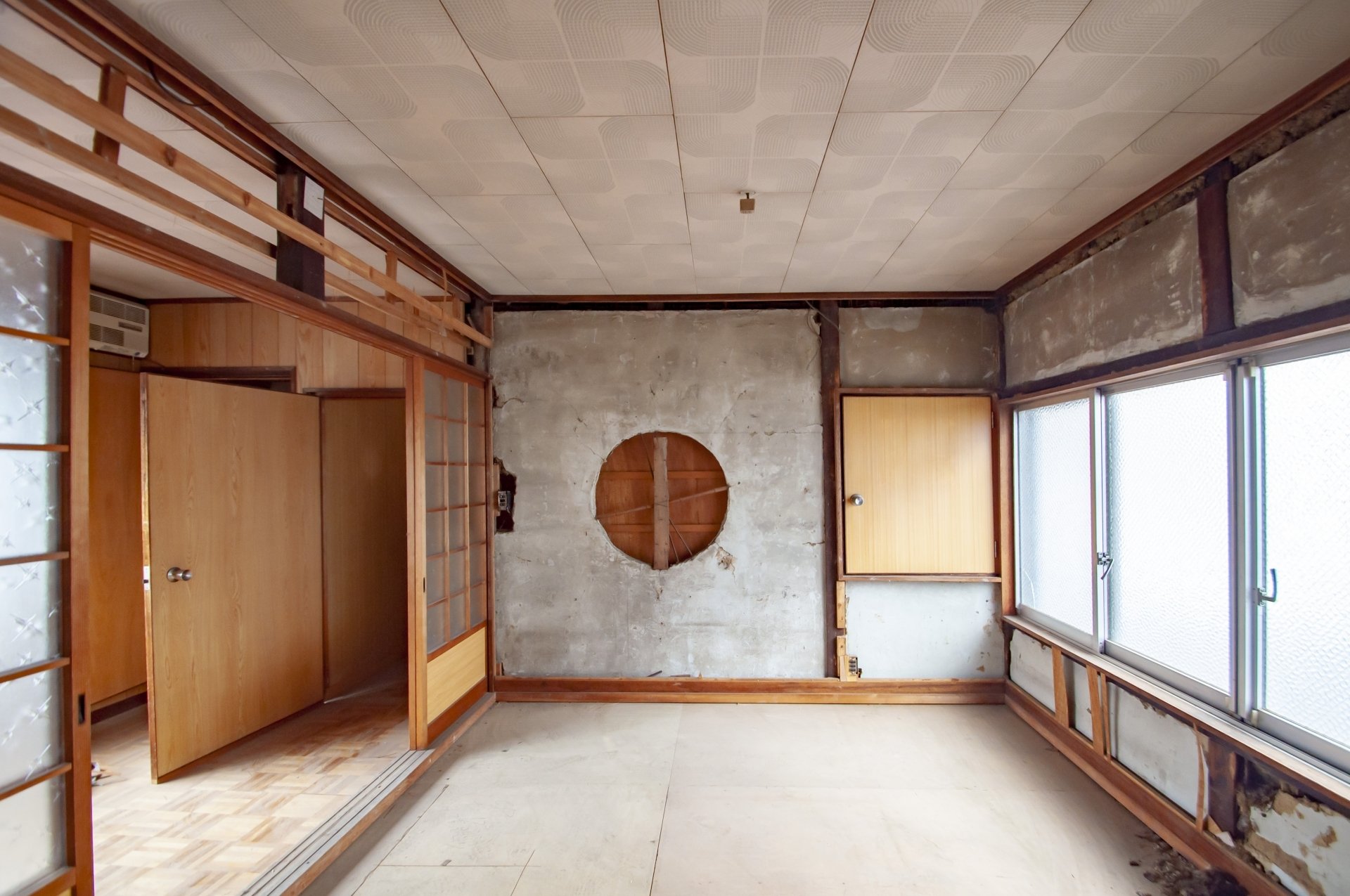When looking for a rental apartment, have you ever seen a notation such as "one month free rent" or "rent free period available"?
Free Rent isa type of rental contract in which rent is waived for a certain period of time. At first glance, this may seem like a very good deal, but in reality there are both advantages and disadvantages, and you need to fully understand them before signing a contract.
In this article, based on our experience as INA&Associates in handling numerous rental contracts, we will explain everything from the structure of free rent to points to keep in mind, in an easy-to-understand manner for the average consumer.
If you are considering signing a lease contract, want to reduce the initial cost, or are interested in a rent-free property, please read to the end. By acquiring the appropriate knowledge, you will be able to make a better choice of housing.
Basic Knowledge of Free Rent
Definition and Mechanism of Free Rent
The term "free rent" is a combination of the words "free" and "rent," and literally refers to a form of rental contract in which rent is waived for a certain period of time.
Specifically, in rental apartments and condominiums, rent payments are waived for a certain period of time (usually from one to three months) after moving in. During this period, the tenant can continue to live in the property as usual, and must pay separately for utilities, management and common service fees.
In the real estate industry, rent-free rent is used as a method of substantially undercutting rents while avoiding a direct impact on the market rent. In particular, it is often used to promote occupancy in properties that have been vacant for a long period of time or in newly constructed properties, or as a means of securing tenants outside of the moving season.
Free Rent Period Setting Patterns
The free rent period varies depending on the property and real estate agency, but in general, the patterns are as follows.
| Free Rent Period |
Characteristics of applicable properties |
Main purpose |
| 1 month |
General rental properties |
Initial cost reduction, move-in promotion |
| 2 months |
Properties with long vacancy periods |
Securing tenants at an early stage |
| 3 months |
High-end properties, commercial properties |
Securing long-term tenants |
| More than 6 months |
Properties in special locations or conditions |
Move-in promotion due to special circumstances |
The longer the rent-free period, the greater the benefit to the tenant, but at the same time, the penalty for short-term cancellation tends to be higher.
Background of the Free Rent Program
The main reasons for property owners to offer rent-free periods are to reduce vacancy risk and promote tenant retention.
Since the opportunity loss caused by continued vacancy is often greater than the rent waiver during the free rent period, a business decision is made to secure tenants even if it means accepting a short-term decrease in income.
In addition, since the effect of a substantial price reduction can be obtained without lowering the market rent, it contributes to maintaining the rent level in the future. For tenants, there is also the benefit of reduced initial costs, making this a mutually beneficial contract structure for both parties.
In the highly competitive rental market, especially in the Tokyo metropolitan area, the free rent system is actively used as a means of differentiation from other properties. In the case of newly constructed properties, it is not uncommon for it to be introduced as part of a promotional strategy to achieve early full occupancy.
Advantages and Disadvantages of Free Rent
Advantages for tenants
By choosing a free-rent property, tenants can enjoy multiple economic benefits.
The most significant benefit isa significant reduction in initial costs.In a normal rental contract, initial costs equivalent to 4-6 months' rent are required for a security deposit, key money, broker's commission, and advance rent, etc. Free Rent reduces the burden of the advance rent portion. For example, a 100,000 yen rent property with one month's free rent will reduce the initial cost by 100,000 yen.
Avoiding double rent is anotherimportant benefit. When moving from your current residence to a new one, you usually have to temporarily pay both the old and new rent.
Thiscanalso be applied to the cost of moving.You can use the rent savings to pay the moving company or to purchase furniture and appliances necessary for your new life, thereby reducing the overall start-up costs of your new life.
Disadvantages and points to note on the tenant's side
On the other hand, there are some points that tenants should be aware of in a rent-free property.
The most important point to note is theshort-term cancellation penalty.In many free-rent properties, if the tenant cancels the lease within a certain period of time (usually one to two years), the tenant is required to pay a penalty equivalent to the rent for the free-rent period. For example, if you terminate within one year of receiving two months of free rent, you may be required to pay a penalty of 200,000 yen (100,000 yen rent x 2 months).
Continued payment of management and common service fees is anotherpoint that is often overlooked. The free rent only applies to rent; you must pay the management fee, common service fee, and parking lot fee as usual. If there is a monthly management fee of 20,000 yen, you will still have to pay 20,000 yen each month during the free rent period.
You shouldalsopay attention to therelatively high rent setting.To recover the cost of the free rent, some properties are set at a higher rent than the normal market rent. When considering long-term residence, it is important to compare and consider the total payment.
Advantages and disadvantages on the landlord's side
For the lessor, free rent can also function as a strategic technique.
The main advantage is thereduction of the vacancy period.Comparing the opportunity loss from one month of vacancy with the loss from one month of free rent, securing stable income through early occupancy is often more advantageous for business management.
Maintaining the market rent is alsoan important effect. It contributes to maintaining the rent level and property value in the future, as it can provide a substantial price reduction effect without lowering the rent itself.
The quality of tenantscanalsobe expected toimprove.Tenants who are attracted to rent-free conditions generally tend to have good financial planning and can expect stable rent payments over the long term.
On the other hand,a short-termdecrease inincomeis inevitable. In addition, it may be difficult to collect penalties in the event of a short-term cancellation, so it is important to set the tenant's creditworthiness and the terms of the contract.
Merit/Demerit Comparison Chart
| Item |
Advantages for tenants |
Demerits for tenants |
| Initial cost |
Significant reduction (1-3 months rent) |
Ongoing payment of management fees, etc. |
| Contract term |
Avoidance of double rent |
Risk of short-term cancellation penalty |
| Long-term costs |
Allowable for moving expenses |
Possibility of overpriced rent setting |
| Property Selection |
Possible to select top properties with lower initial cost |
Limited choices |
| Item |
Advantages for lenders |
Disadvantages for Lenders |
| Vacancy Prevention |
Securing tenants early |
Short-term decrease in income |
| Rent level |
Real price reduction while maintaining market price |
Risk of penalty collection |
Important points to keep in mind when signing a free rent contract
Points to check in the contract
When considering signing a contract for a free rent property, it is important to check the details of the contract more carefully than in a normal rental contract.
Theshort-term cancellation penaltyclause is the most important point to check. You need to clearly understand the period during which the penalty will be incurred, the amount, and how it will be calculated. Generally, clauses such as "If the contract is terminated within X years from the start of the contract, an amount equivalent to the rent for the free rent period will be paid as a penalty.
The definition of the rent-free period is alsoimportant. It is necessary to confirm whether the period starts from the date the contract begins or from the date the tenancy begins, and whether it is calculated on a pro-rata basis. For example, check to see if the contract clearly states how you will be treated if you move in in the middle of the month.
The handling of administrative and common service fees should alsobe clarified. Check whether the free rent only covers rent or includes management fees, etc., and understand your obligation to pay during the free rent period.
Handling of mid-term cancellation
There are special conditions for cancelling a lease during the free rent period that are different from those of a normal lease contract.
The method ofcalculating the penalty feevaries from property to property. The most common pattern is to set the penalty fee at an amount equal to the free rent period; for example, if you receive 2 months of free rent, the penalty fee is equivalent to 2 months' rent.
The length of time for which a penalty fee is charged alsovaries from contract to contract, depending on the property and the landlord's policy, such as within one year, within two years, or within half of the contract period. If there is a possibility that you may be transferred or change jobs, you should carefully consider this set period.
Even in the case ofcancellation due to unavoidable circumstances, the obligation to pay a penalty is not basically exempted. Contractual obligations generally continue even if there are reasons such as illness, unemployment, or family circumstances.
Conditions for Renewal
Special conditions may be set when renewing a contract for a rent-free property.
Usually, thefree rentis not appliedat the time of renewal. In most cases, it is set as a benefit only for the initial contract. You should calculate your long-term housing expenses based on the assumption that you will be contracted at the normal rent at the time of renewal.
The setting of renewal fees alsoneeds to be confirmed. In some cases, the renewal fee is set higher than usual for a free-rent property. This may be set as part of a mechanism to recover the initial free rent amount at the time of renewal.
Thepossibility of rent changesis also something to consider. There is a possibility that rents will increase at renewal, especially if the market rate increases during the free rent period, and a significant rent increase may be offered.
Pre-Contract Checklist
Before signing a contract for a rent-free property, be sure to check the following items.
| Check items |
Contents to be checked |
Importance |
| Short-term cancellation penalty |
Amount, period, and calculation method |
★ ★ ★ ★ ★ ★ ★ ★ ★ ★ ★ ★ ★ ★ ★ ★ ★ ★ ★ ★ ★ ★ ★ ★ ★ ★ |
| Free Rent Period |
Start date, end date, pro-rata calculation |
★ ★ ★ ★ ★ ★ ★ ★ ★ ★ ★ ★ ★ ★ ★ ★ ★ ★ ★ ★ ★ ★ ★ ★ ★ ★ |
| Handling of management fees, etc. |
Scope, Payment Obligation |
★ ★ ★ ★ ★ ★ ★ ★ ★ ★ ★ ★ ★ ★ ★ ★ ★ ★ ★ ★ ★ ★ ★ ★ ★ ★ |
| Conditions for renewal |
Renewal fee, rent revision |
★★★☆ |
| Property Condition |
Facilities, Location, Surroundings |
★★★★ |
| Total payment |
Long-term cost calculation |
★★★★ |
Contract clauses to be aware of
Special attention should be paid to the following clauses in the free rent contract.
In some cases, there are strict clauses such as,"Cancellation during the free rent period will result in a full penalty charge.In this case, if you terminate the lease during the free rent period, you may be subject to a penalty fee including the remaining rent for the remainder of the contract period.
Conclusion
Summary of Free Rent Essentials
Free Rent is a type of rental contract that allows tenants and landlords to enjoy a certain period of rent-free rent, a system that benefits both tenants and landlords.
For tenants, there are economic advantages such as reduced initial costs, avoidance of double rent, and allocation to moving expenses. On the other hand, there are disadvantages such as the risk of short-term cancellation penalties, continued payment of management fees, and the high cost of setting rent.
For the landlord, there are advantages such as shortening the vacancy period, maintaining the market rent rate, and securing quality tenants, but there are also disadvantages such as a short-term decrease in income and the risk of collecting penalty fees.
The most importantpoint is to fully understand the terms of the short-term cancellation penalty. In many cases, the penalty fee is equivalent to the free rent period, and the financial burden of unexpectedly having to relocate should be understood in advance.
Guidelines for Appropriate Decision Making
It is important to comprehensively judge the following factors to determine whether or not you should select a rent-free property.
Theexpectedperiod ofresidenceis the most important criterion. If you plan to reside in the property for a longer period of time than the period during which the short-term cancellation penalty will be incurred, you can fully enjoy the benefits of the free rent. Conversely, if you are likely to be transferred or change jobs, you should carefully consider the risk of penalty fees.
Comparison in terms of total payment is alsoessential. By calculating the long-term housing cost, including the free rent period, and comparing it to a regular property with comparable conditions, you can determine the true economic benefits.
The quality and location of the property are alsoimportant factors. It is necessary to objectively evaluate the value of the property itself and its location without being misled by the free rent condition.
Next Action Steps
If you are considering a rent-free property, we recommend that you proceed with the following steps.
First,clarify how long you plan to reside in the property. Set a specific number of years you plan to stay in the property, taking into consideration the possibility of relocation, changes in family structure, changes in life plans, etc.
Next,compare thetotal payment for several properties.Include both free-rent and regular properties in your shortlist, and compare the total cost, including initial, monthly, and renewal fees.
Detailed confirmation of contract terms is alsoessential. Check the contract for the conditions of short-term cancellation penalties, the definition of the free rent period, and the handling of management fees, etc. Be sure to ask questions if anything is unclear.
Finally, werecommend consulting withan expert.By consulting with a real estate professional, a financial planner, or other specialist with expertise in real estate, you will be able to make a more appropriate decision.
For wise housing selection
Free rent is a very effective system if utilized appropriately, but signing a contract without fully understanding the terms and conditions may result in unexpected burdens.
It is important togathersufficientinformation and make comparisonsto make the most appropriate choice for your lifestyle and financial situation. Please keep in mind that your decision should be based on a long-term perspective, not just on short-term benefits.
Real estate is one of the most important decisions you will make in your life. We hope that you will consider it from many angles, including the option of free rent, and realize a satisfactory choice of residence.
If you have any questions about choosing a rental property, please feel free to contact INA & Associates. With our wealth of experience and expertise, we will assist you in selecting the most suitable residence for each of our clients.
Frequently Asked Questions
Q1. If I move out during the rent-free period, how much is the penalty fee?
The penalty fee for moving out during the rent-free period varies greatly depending on the details of the contract.
Generally, the penalty fee is set at an amountequivalent to the rent for the rent-free period.For example, if the rent is 100,000 yen and you receive 2 months of free rent, you may have to pay a penalty of 200,000 yen.
However, some properties may have stricter conditions. For example, if there is a clause that states, "If you cancel the lease during the free rent period, you will have to pay a penalty including the rent for the remaining contract period," you may have to pay a penalty of several hundred thousand yen or even several million yen.
It is important tomake sure to check before signinga contract and consider the risk of moving out due to unavoidable circumstances.
Q2. What is the relationship between free rent and deposit/key money?
Free Rent is an exemption from rent andis aseparate concept from Shikikin and Rei-kin.
In most cases, even in the case of rent-free apartments, you are still required to pay a security deposit and key money as usual. Shikikin is to cover the cost of restoring the apartment to its original condition when moving out or as collateral in case of rent arrears, and key money is to be paid as a reward for signing a contract, and is set regardless of whether there is free rent or not.
However, some properties may offer combined terms such as "one month free rent + no key money". In this case, the initial cost will be further reduced.
It is important to check all expense items other than free rent in order to accurately grasp the totalinitial cost.
Q3. How can I look for a rent-free property?
To efficiently search for a no-rent property, it is effective to use a combination of several methods.
Somereal estate portal sitesallow you to set keywords such as "free rent" or "rent-free period" as search criteria.
Direct consultation with a real estate agency is alsoeffective. In particular, some community-based real estate agencies may have information on properties that are not listed on portal sites. Please let them know that you wish to apply for free rent and consult with them.
It is also important tochoose the right time of year.Outside of the moving season (February-April), especially around May-August, vacancies tend to increase and there is a higher possibility of finding many free-rent properties.
Q4. How is the free rent period calculated?
The calculation of the free rent period is determined by the terms of the contract.
Themost commoncalculation is on a monthly basis.In the case of "1 month free rent," one month's rent is waived from the first day of occupancy. For example, if you move in on April 15, the free period would be until May 14 (or May 15).
Pro-rata calculationmay be applied. If you move in in the middle of a month, only the remaining days of that month may be calculated as the free rent period.
In the caseof a calendar month calculation, thefree rent will be applied to the specified number of months from the month of moving in.
It is important to be sureto check the contractand ask questions before signing if anything is unclear.
Q5. Is the free rent property really a good deal?
Whether or not a rent-free property is a good dealrequiresa comprehensive judgment.
It is definitely beneficial in the short term. The initial cost reduction effect is clear, especially for long-distance relocations where moving costs tend to be high, or when new furniture and appliances are needed, which can be a big help.
However, caution should be exercisedin the long term.If the cost of free rent is added to the rent, the total payment may be more expensive for long-term residence.
Todetermine the true value for money, we recommend that you make the following calculations
-Comparison of rent with a regular property of comparable condition
-Comparison of total payments including initial costs (2 years, 3 years, etc.)
-Calculate the real cost taking into account the risk of short-term cancellation.
Ifthe expected period of residence is long and the possibility of short-term cancellation is low, a rent-free property is a very economical option. Conversely, if there is a high likelihood that you will be transferred or change jobs, you will need to carefully consider the risk of penalty fees.


.png)













